Lyman Trumbull Elementary School (1909-2013)
Introduction
Text-to-speech Audio
Images
Trumbull Elementary School circa 1920
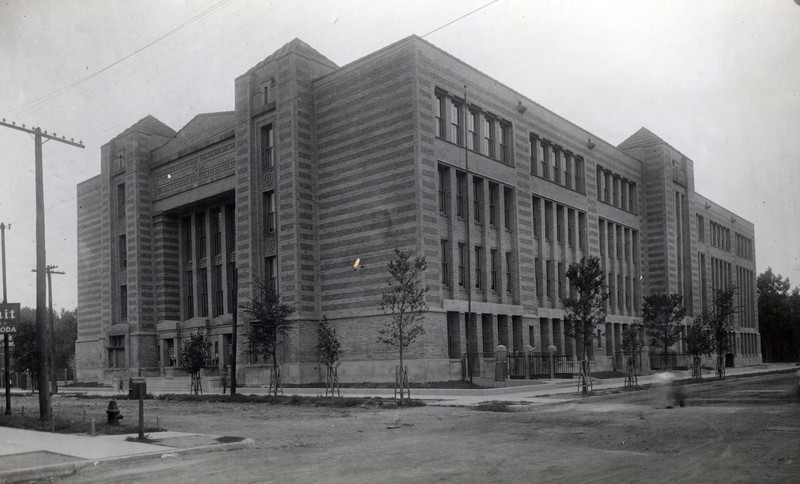
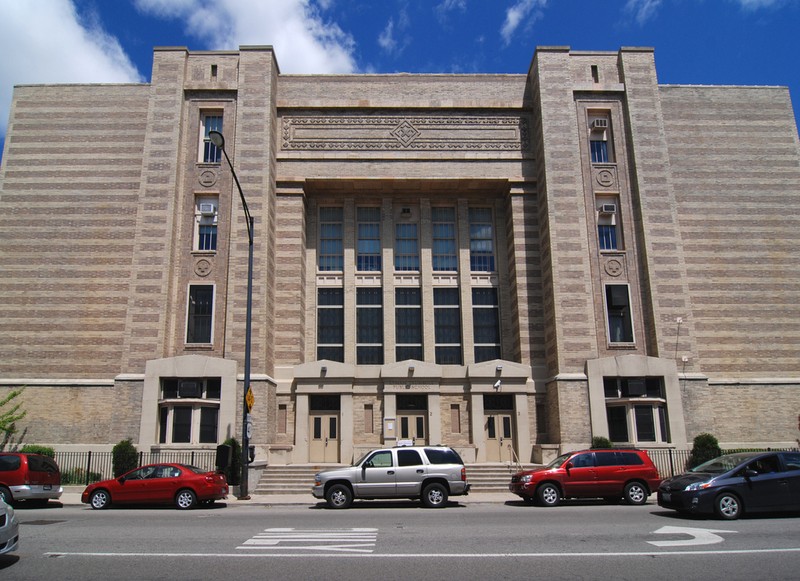
Trumbull Elementary School circa 1940
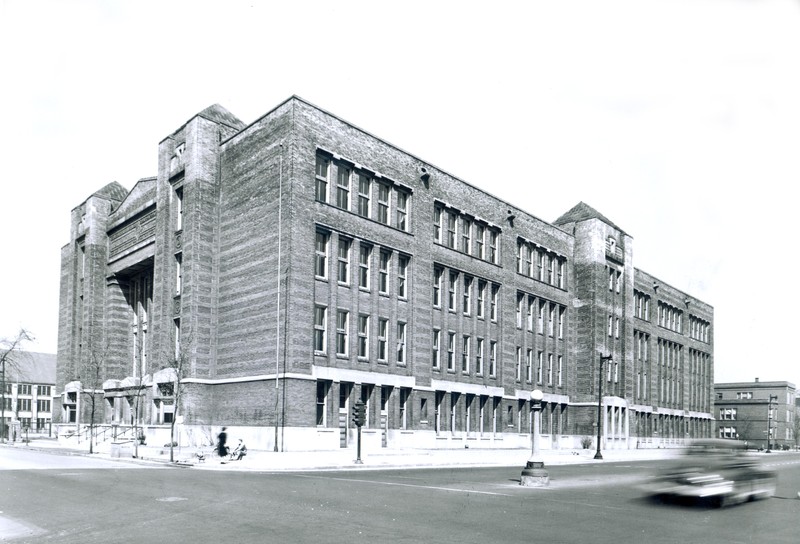
One of the Columbus murals inside Trumbull
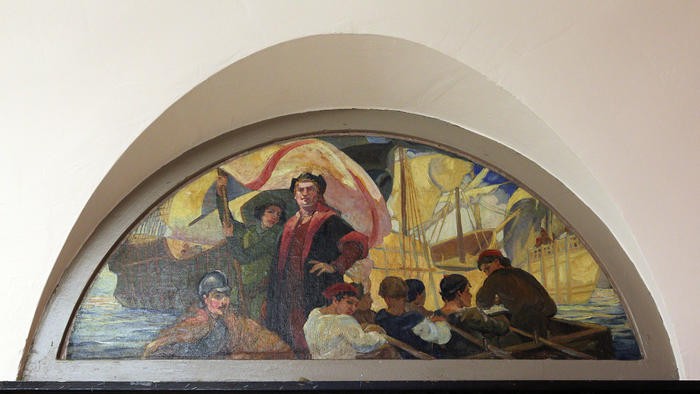
Dwight H. Perkins, architect of Trumbull and a Prairie School practitioner
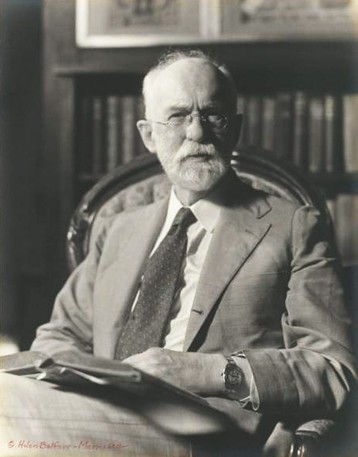
Backstory and Context
Text-to-speech Audio
In the late 19th and early 20th centuries, Chicago transformed from a quiet lakeside town into a bustling Midwestern metropolis. As the city’s population boomed, so too did its need for new schools. In the Swedish enclave of Andersonville, local citizens demanded a new school to replace their dilapidated existing one.
The Chicago Board of Education’s chief architect was Dwight H. Perkins. A well-known Chicago architect, Perkins belonged to a young group of emerging Midwestern designers (including Frank Lloyd Wright) who practiced the Prairie School of Architecture. The Prairie School is “marked by its integration with the surrounding landscape, horizontal lines, flat or hipped roofs with broad eaves, windows assembled in horizontal bands, solid construction, craftsmanship, and restraint in the use of decoration.” Perkins oversaw the design of a number of new Chicago schools, several of which were crafted along Prairie School lines, including Lyman Trumbull Elementary School in Andersonville.
Named for 19th-century Illinois Senator Lyman Trumbull, who introduced the 13th Amendment ending slavery for the Senate’s consideration, the school’s cornerstone was laid on October 3, 1908 to great fanfare. Speeches were made by local officials, and children paraded and sang songs. The school building reflects the Prairie School influences of Mr. Perkins, featuring tall, imposing walls, vertical windows, and horizontal banding on the brick exterior. The interior is centered on a large auditorium under a three story ceiling. Perkins used a similar design when constructing the George Tilton Elementary School in West Side Chicago. Unique to Trumbull are several beautiful murals painted by an unknown artist in 1913; these murals depict Christopher Columbus discovering the New World.
Classes began at Trumbull in 1909 under the direction of Principal Helen Ryan. The school’s population continued to grow, and an addition was added in 1912. In the early 2000s, the building was renovated. In 2013, as part of a massive wave of city-wide school closures, Trumbull closed its doors. Although the building was considered for residential use, the city allowed the private Chicago Waldorf School to utilize the building. Opening in 2018, the Chicago Waldorf School maintains the educational purpose of the building once known as Lyman Trumbull Elementary.
Sources
1. Julia S. Bachrach. "Lyman Trumbull Elementary School." August 26, 2013. Chicago Historic Schools. Web. Accessed November 17, 2020. https://chicagohistoricschools.wordpress.com/2013/08/26/lyman-trumbull-elementary-school/
2. "Lyman Trumbull Elementary School Celebrates 100 Years." Edgewater Scrapbook. Vol. 19, No. 3 (Fall 2008). Web. Accessed November 17, 2020. http://www.edgewaterhistory.org/ehs/articles/v19-3-2
3. Jay Kozlarz. "Historic Andersonville school gets a fresh lease on life." February 21, 2018. Curbed Chicago. Web. Accessed November 17, 2020. https://chicago.curbed.com/2018/2/21/17036394/andersonville-trumbull-school-waldorf
4. Jennifer Delgado. "Historic murals to stay at Trumbull Elementary, for now." June 7, 2013. Chicago Tribune. Web. Accessed November 18, 2020. https://www.chicagotribune.com/news/ct-xpm-2013-06-07-ct-met-historic-trumbull-mural-20130607-story.html
5. Prairie School Architecture. Web. Accessed November 18, 2020. http://www.prairieschoolarchitecture.com/
6. "Chicago Waldorf's Andersonville Campus Officially Opens at Old Trumbull Property." September 6, 2018. Edgeville Buzz. Web. Accessed November 18, 2020. https://www.edgevillebuzz.com/news/chicago-waldorfs-andersonville-campus-officially-opens-at-old-trumbull-property
7. Julia Bachrach. "Happy 150th Birthday Dwight Heald Perkins." April 6, 2017. Julia Bachrach Consulting. Web. Accessed November 18, 2020. https://www.jbachrach.com/blog/2017/4/7/happy-150th-birthday-dwight-heald-perkins
Edgewater Historical Society: https://chicagohistoricschools.wordpress.com/2013/08/26/lyman-trumbull-elementary-school/
Bill Latoza: https://chicagohistoricschools.wordpress.com/2013/08/26/lyman-trumbull-elementary-school/
Terrence Antonio James, Chicago Tribune: https://www.chicagotribune.com/news/ct-xpm-2013-06-07-ct-met-historic-trumbull-mural-20130607-story.html
Morrison-Shearer Foundation: https://www.jbachrach.com/blog/2017/4/7/happy-150th-birthday-dwight-heald-perkins
